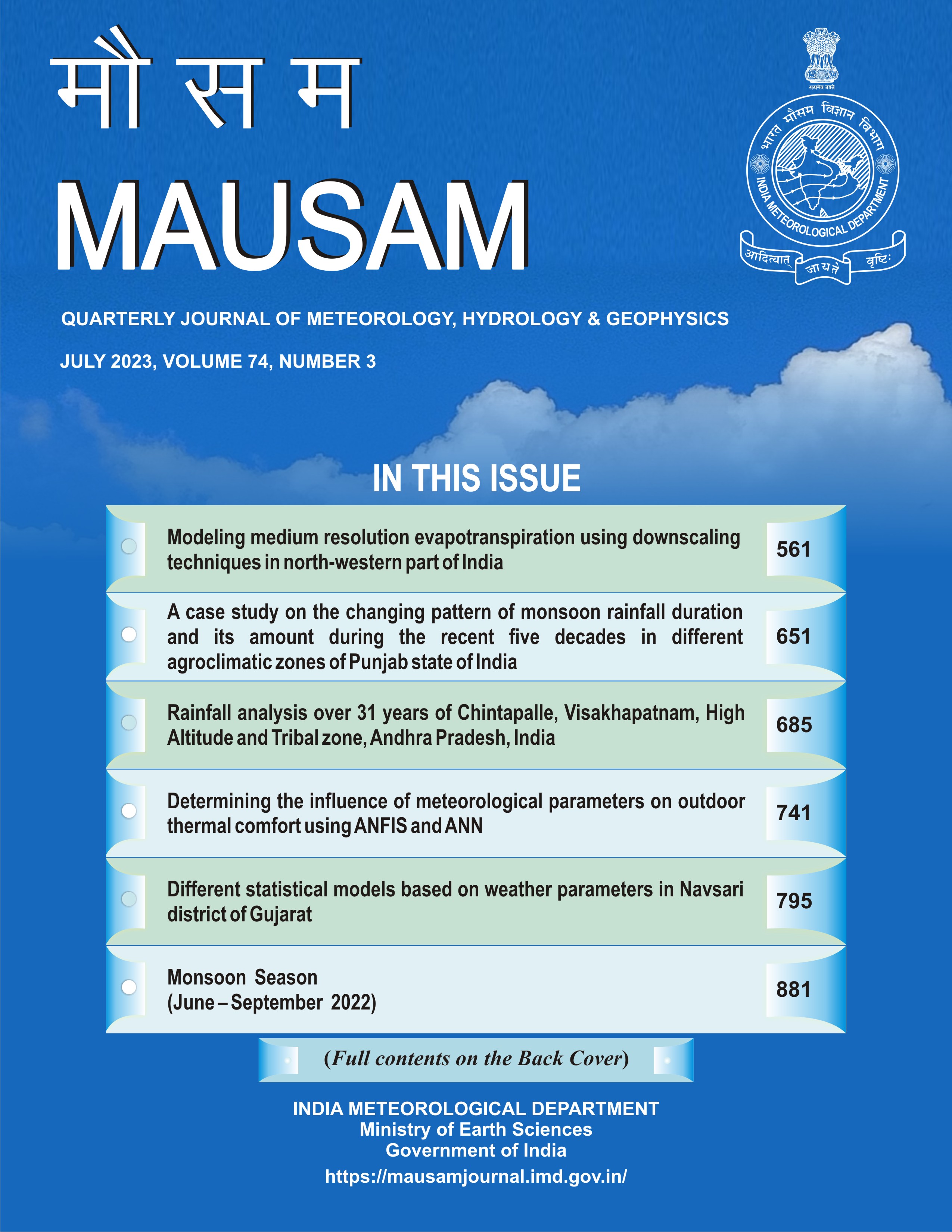Linking the solar cycle and Earth’s climate
DOI:
https://doi.org/10.54302/mausam.v74i3.1383Abstract
In this paper, the authors have made an effort to investigate the impact of the solar cycle on Earth’s climate in the context of rainfall and temperature over a location, on El Nino/ La Nina, and world famines. The study shows that the peak sunspot number (SSN) often occurs in pairs. Multiple peaks are also seen frequently. The La Ninas follow multiple peaks, or sometimes associated with it. The El Ninos usually follow the solar minima, though not always. This study shows that the SSN trough will occur in 2020, thereby causing El Nino during 2019-2021. The multiple SSN peak is likely to occur during 2023-2028, predicting a La-Nina during this period. Multiple SSN peaks and very high SSN values bring about famines. The study shows that the total solar irradiance (TSI) bears a strong correlation with the SSN. Besides, the cosmic ray flux decreases as the SSN and the TSI increases. The monthly and yearly variations of SSN, TSI, and temperature show increasing trends over the years, indicating increased warming as the years advance. However, none of these parameters bears significant correlations with the temperature, either independently or together, implying that some other factors are also responsible for determining the temperature. The study shows no direct relationship between rainfall and the SSN. However, several years show a similar trend between the two. The investigation indicates a strong influence of the solar cycle on world climate.
Downloads
Published
How to Cite
Issue
Section
License
Copyright (c) 2023 MAUSAM

This work is licensed under a Creative Commons Attribution-NonCommercial 4.0 International License.
All articles published by MAUSAM are licensed under the Creative Commons Attribution 4.0 International License. This permits anyone.
Anyone is free:
- To Share - to copy, distribute and transmit the work
- To Remix - to adapt the work.
Under the following conditions:
- Share - copy and redistribute the material in any medium or format
- Adapt - remix, transform, and build upon the material for any purpose, even
commercially.



